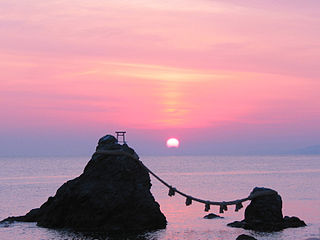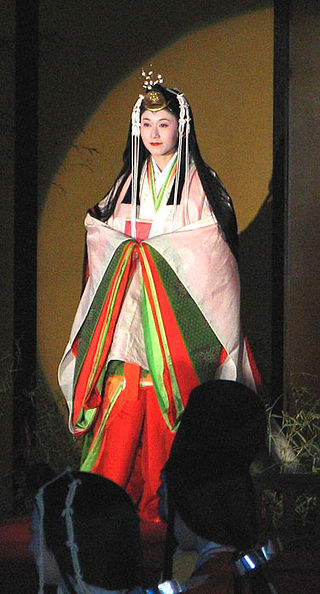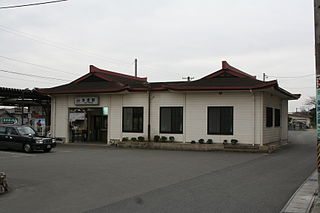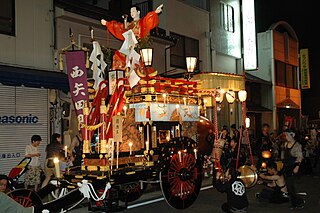

The Tado Festival (多度祭, Tado Matsuri) is a Japanese festival that takes place every year during Japan's Golden Week on May 4 and 5 at Tado Shrine in the city of Kuwana, Mie Prefecture.


The Tado Festival (多度祭, Tado Matsuri) is a Japanese festival that takes place every year during Japan's Golden Week on May 4 and 5 at Tado Shrine in the city of Kuwana, Mie Prefecture.
The main event for the festival is a horse jumping event. The horses are ridden by young males around the ages of 17–19 representing the six sections of the city. The horses run up a hill before trying to jump over a two-meter high wall. On the first day, each area's representative jumps over the wall twice for a total of 12 jumps. On the second day, each representative only makes one attempt for a total of six jumps. Other events follow the horse jumping on the second day, including yabusame , a form of archery.
This event was named one of Mie Prefecture's Designated Intangible Cultural Properties in 1978.
From 2020 to 2022, this traditional festival was completely suspended as a preventative measure for the COVID-19 pandemic.[ citation needed ]

Japanese festivals are traditional festive occasions often celebrated with dance and music in Japan. In Japan, festivals are called matsuri (祭り), and the origin of the word matsuri is related to the kami; there are theories that the word matsuri is derived from matsu (待つ) meaning "to wait ", tatematsuru (献る) meaning "to make offerings to the kami", and matsurau (奉う) meaning "to obey the kami". The theory that it is derived from matsurau is the most popular.

Kyoto Prefecture is a prefecture of Japan located in the Kansai region of Honshu. Kyoto Prefecture has a population of 2,561,358 and has a geographic area of 4,612 square kilometres (1,781 sq mi). Kyoto Prefecture borders Fukui Prefecture to the northeast, Shiga Prefecture to the east, Mie Prefecture to the southeast, Nara Prefecture and Osaka Prefecture to the south, and Hyōgo Prefecture to the west.

Mie Prefecture is a prefecture of Japan located in the Kansai region of Honshu. Mie Prefecture has a population of 1,781,948 and has a geographic area of 5,774 square kilometers (2,229 sq mi). Mie Prefecture is bordered by Gifu Prefecture to the north, Shiga Prefecture and Kyoto Prefecture to the northwest, Nara Prefecture to the west, Wakayama Prefecture to the southwest, and Aichi Prefecture to the east.

Iida is a city in Nagano Prefecture, Japan. As of 1 March 2019, Iida had an estimated population of 101,536, and a population density of 154 persons per km2. The total area of the city is 658.66 square kilometres (254.31 sq mi). Iida is an environmental model city, a municipality designated by the Japanese government to be a model for making large cuts in greenhouse gas emissions towards a low-carbon society.

Kuwana is a city located in Mie Prefecture, Japan. As of 31 March 2021, the city had an estimated population of 141,045 in 60,301 households and a population density of 1000 persons per km2. The total area of the city is 136.68 square kilometres (52.77 sq mi).

Owase is a city located in Mie Prefecture, Japan. As of 1 August 2021, the city had an estimated population of 16,910, in 9,177 households. The population density was 88 persons per km2. The total area of the city was 192.71 square kilometres (74.41 sq mi).

Tsushima is a city located in Aichi Prefecture in the Chūbu region of Japan. As of October 1, 2019, the city had an estimated population of 61,647 in 26,559 households, and a population density of 2,457 persons per km². The total area of the city is 25.09 square kilometres (9.69 sq mi).
Tado was a town located in Kuwana District, Mie Prefecture, Japan.
Nagashima was a town located in Kuwana District, Mie Prefecture, Japan.

Kuwana is a district located in Mie Prefecture, Japan.

A mikoshi (神輿) is a sacred religious palanquin. Shinto followers believe that it serves as the vehicle to transport a deity in Japan while moving between main shrine and temporary shrine during a festival or when moving to a new shrine. Often, the mikoshi resembles a miniature building, with pillars, walls, a roof, a veranda and a railing.
Kakegoe (掛け声) usually refers to shouts and calls used in performances of traditional Japanese music, Kabuki theatre, and in martial arts such as kendo.

Saiō (斎王) or itsuki no miko was the title of the unmarried female members of the Japanese Imperial Family, sent to serve at Ise Grand Shrine from the late 7th century to the 14th century. The saiō's residence, Saikū (斎宮), was about 10 km (6.2 mi) north-west of the shrine. The remains of Saikū are situated in the town of Meiwa, Mie Prefecture, Japan.

Sanja Matsuri, or Sanja Festival, is one of the three largest Shinto festivals in Tokyo. It is considered one of the wildest and largest in Japan. The festival is held in honor of Hinokuma Hamanari, Hinokuma Takenari, and Hajino Nakatomo, the three men who established and founded the Sensō-ji Buddhist temple. Sanja Matsuri is held on the third weekend of every May at Asakusa Shrine. Its prominent parades revolve around three mikoshi, as well as traditional music and dancing. Over the course of three days, the festival attracts 1.5 to 2 million locals and tourists every year.

Tado Shrine is a Shinto shrine located in the Tado-chō area of the city of Kuwana in Mie Prefecture, Japan. It is well known for its Tado Festival, which takes place on May 4 and 5 every year. The shrine has five nationally designated and one prefecturally designated Important Cultural Properties.

Tado Station is a passenger railway station located in the city of Kuwana, Mie Prefecture, Japan, operated by the private railway operator Yōrō Railway.

Aso Shrine is a Shinto Shrine in Aso, Kumamoto Prefecture, Japan. Aso is one of the oldest shrines in Japan. This shrine holds several Important Cultural Properties, including Ichi-no-shinden (一の神殿), Ni-no-shinden (二の神殿), and Rōmon (楼門). The Aso family in charge of the shrine is said to have the second oldest recorded lineage in Japan after the Imperial family. The Aso Shrine was heavily damaged in the 2016 Kumamoto earthquakes. The shrine's rōmon completely collapsed. The haiden also collapsed.

Ishidori Matsuri (石取祭) can be literally translated from Japanese as "stone bringing festival." It is a festival in Kuwana, located in Mie Prefecture. The festival starts on the first Saturday of August, at midnight, and runs throughout the weekend. Every town within the central part of the city has its own 3 wheeled, highly decorative festival cart. Each cart has a large taiko drum at the back and several kane along the sides. Each town has a particular sequence for each of those instruments, creating a unique and identifying sound. Another identifying feature is the placement of the kakegoe, or shouts. Over the course of the weekend, the carts are pulled toward Kasuga Shrine for presentation, performing along the way. With over 30 carts with distinct rhythms, it has been said that the Kuwana festival is the loudest festival in Japan.

Suigō Prefectural Natural Park is a Prefectural Natural Park in northeast Mie Prefecture, Japan. Established in 1953, the park comprises one unified area that spans the borders of the municipalities of Kuwana and Kisosaki. In Heisei 16 (2004), nearly six-and-a-half million visitors entered the park, making it second in the prefecture, amongst its Natural Parks, to Ise-Shima National Park, and exceeding the number of visitors to Yoshino-Kumano National Park, Suzuka Quasi-National Park, and Murō-Akame-Aoyama Quasi-National Park. As of 31 March 2020, of its total designated area of 6,842 hectares, state land totalled 2,362 hectares, other public land 114 hectares, and private land 4,366 hectares.

Shirongo Matsuri (しろんご祭) is a Japanese festival that takes place on the island of Sugashima in Toba, Mie Prefecture, Japan in early July each year. Offered in prayer for a bountiful catch and maritime safety, it has been designated a Municipal Intangible Folk Cultural Property, is a constituent part of Japan Heritage Story #073, Shima & Toba, Towns Where You Can Encounter Ama: Women Who Live Through Skin Diving, and has been selected by the Ministry of Land, Infrastructure, Transport and Tourism for inclusion on its listing of Island Treasures: 100 Views.